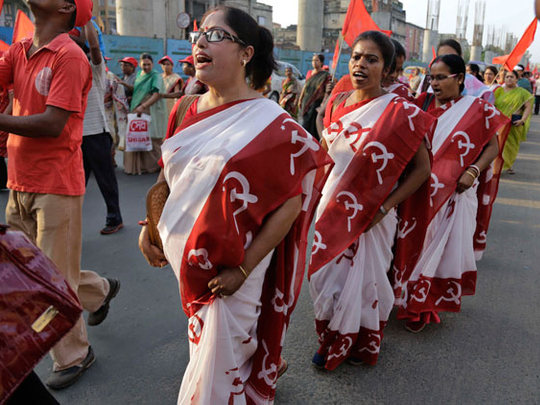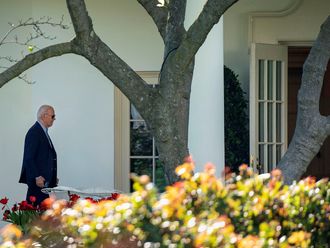
Kolkata: West Bengal, which played a pivotal role in successive United Progressive Alliance governments, is all set to witness a four-cornered fight between Trinamool Congress (TMC), Communist Party of India–Marxist (CPI-M), Congress party and the Bharatiya Janata Party (BJP), for the first time in its political history.
This has turned the electoral contest into a battle royal in the state, which sends 42 representatives to the Lok Sabha, the lower house of parliament.
Emboldened by the party’s recent victories at the panchayat (village council) and municipal elections, Mamata Banerjee-led TMC, which has emerged as the principal political party of the state, has decided for the first time in its 16-year-old political history to fight a major election without a pre-poll alliance with a national party.
However, the uncertainties of a four-cornered fight is not only giving nightmares to psephologist, but also to her friends and foes alike, as weather-beaten politicians, celebrities and greenhorns of all political parties vie for the honours.
The main fight though is still between the TMC and its principal opposition CPI-M, the Congress party which still retains a sizeable portion of the vote share throughout the state, and the BJP which is suddenly witnessing a rise in tandem with the national sentiments, can become a major spoiler in Banerjee’s bid to make TMC a national party, having the third largest number of representative, in the house of 543.
TMC according to its own estimates hopes to win 35 parliamentary constituencies is also banking on a fractured mandate nationally, to fulfil its dream of forming the next government through the ‘federal front’, a non-Congress, non-BJP formation.
The Congress party, which had witnessed a series of defection amongst its state leaders in the last few months mostly to the TMC, is fighting to hold on to the six constituencies it won in 2009, and prevent the possible rout it is predicted to face in other states.
It is critical for its firebrand leader and a known Banerjee baiter Adhir Ranjan Chowdhury, who was recently anointed as the state party president, so to ensure future expansion of the party’s mass base, and to emerge as the principal opposition to the TMC.
BJP though is also fancying its chances of winning a record five seats in West Bengal, in this four-cornered fight, riding on the pro-national sentiments. In 1999, it surprised many by winning two major constituencies and 11 per cent of the favourable vote, but it was in alliance with the TMC. Thereafter the party lost momentum, and was relegated to a distant forth in 2004 and 2009, winning a mere 6 per cent of the votes. In the critical 2011 state assembly elections, it could not register a single win.
For the CPI-M, which was defeated in the state assembly after an epic rule of 34 years, 2014 is a battle of survival. An ageing leadership, plagued by defections, rebellion and organisational glitches, the party has also pinned its hopes in the four-cornered contest to win a larger number of seats, by sheer arithmetical fallacy.
The absence of new crop of leaders and the sheer lack of ideas to enthuse first time voters, the party’s performance in this key state will also be an indicator of the possible future of the Communist movement in the country, especially when the national sentiment is leaning towards the extreme right.












